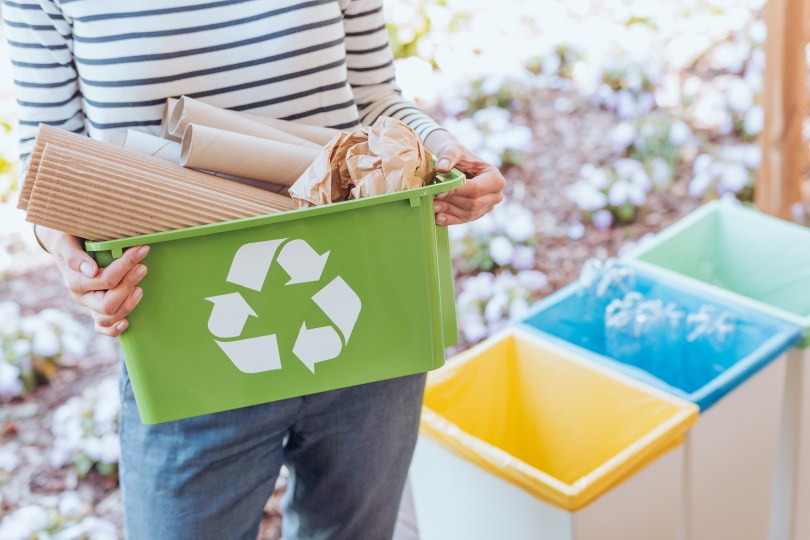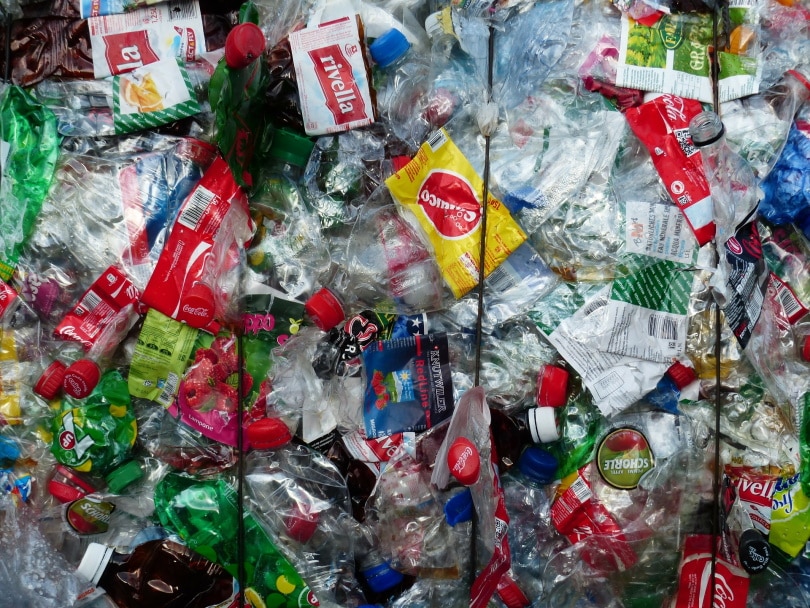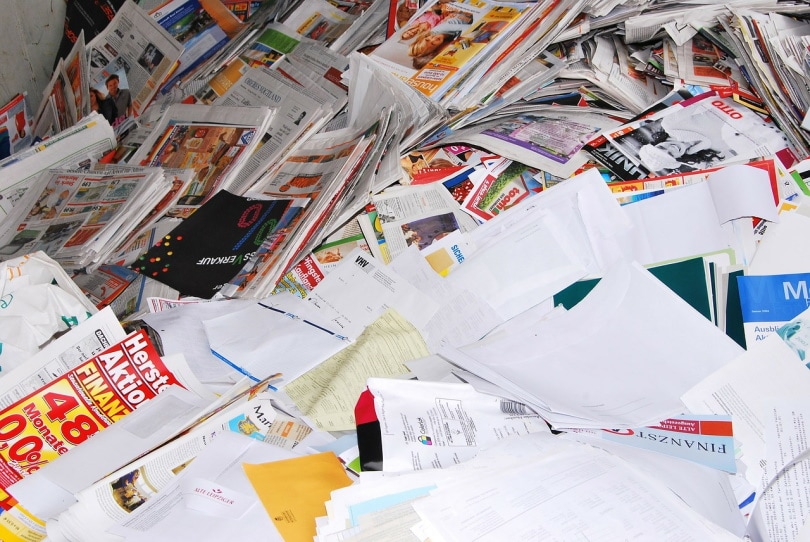Does Recycling Save Energy? Science-Based Facts & FAQ
-
Pete Ortiz
- Last updated:

The United States has made impressive progress in combating pollution and climate change over the past several decades, but it seems we’ve hit a plateau regarding our recycling habits. In 2018, America’s recycling and composting rate was 32.1%1, a decrease from the year prior and the lowest rate since the mid-2000s.
We’re still recycling and composting nearly 94 million tons of solid waste, but we’re also creating more every year. The 292.4 million tons of waste Americans generated in 2018 was nearly 24 million more than the amount the year before. Even when we recycle the same amount, the impact is much lower.
It’s a shame because recycling does more than keep landfill waste down—it also saves tons of energy! Let’s explore the real value of recycling and its potential for effecting positive change.
How Does Recycling Save Energy?
Recycling saves energy by cutting out several steps in producing consumer goods, packaging, and parts. Any recyclable material, whether metal, glass, or plastic, enters the world via a lengthy process of resource extraction, transportation, refinement, and processing into the final product.
The machinery and vehicles involved demand loads of natural resources, electricity, and fossil fuels, much of which can be reduced or eliminated by switching to recycling. The implications for our carbon footprint are substantial. As the U.S. currently only generates about 20% of its electricity from green energy sources, production from raw sources still largely depends on coal, oil, and other non-renewables, creating more greenhouse gas emissions.
How Much Energy Does Recycling Save?

- Aluminum and tin cans
- Plastic bottles
- Paper
- Glass containers
- Batteries
While every product undergoes different processes and thus requires varying amounts of energy, recycling always includes some energy savings over the manufacturing of virgin products.
Check out the EPA’s Individual Waste Reduction Model (iWARM) program if you’re interested in learning more about how recycling contributes to energy savings. Available as a downloadable spreadsheet or widget, the tool lets you input an amount of certain recyclable products and calculates the savings in terms of how long it could power an appliance. It’s an excellent opportunity to gain insight into the individual impact we can all make.
- Energy savings per ton of recycling: 14,000 kWh
- CO2 reductions per ton of recycling: 9 tons
Metal offers the highest overall carbon footprint reduction of any recyclable material. Like glass, you can recycle metal indefinitely without degradation, and the energy savings are substantial.
Aluminum is the best example. Recycled aluminum uses only 5% of the energy it takes to use raw materials. Bauxite ore, the foundation of aluminum manufacturing, is one of the most energy-consuming natural resources to mine and process, but recycled aluminum is easy to melt down and repurpose.
One ton of recycled aluminum saves 14,000 kWh of electricity and nearly 40 barrels of oil, not to mention all of the landfill space we keep open from putting it back into circulation. Even a single recycled can saves enough power to keep a TV running for 3 hours.

- Energy savings per ton of recycling: 5,774 kWh
- CO2 reductions per ton of recycling: 2.5 tons
Plastic is one area where reducing is the most viable option for sustainability. After only 1–2 rounds of recycling, plastic goes into a downcycling process, breaking down for use in jacket fill, rugs, shoes, and other products before going into the trash. It isn’t infinitely recyclable like glass or metal or biodegradable like paper. Once it reaches the landfill, it can take up to 400 years to break down.
Cutting out plastic is, unfortunately, next-to-impossible at this stage, so if you can’t avoid it, you can at least recycle it. Even the few rounds plastic goes through in recycling and downcycling is preferable to new plastic production, which consumes around 4% of America’s energy production.
New products from recycled plastics use as little as 10% of the energy needed to manufacture them from raw materials. Recycling plastic saves 5,774 kWh per ton, covering the average American household’s energy consumption for six months. It also spares 16 barrels of oil and roughly 30 cubic yards of landfill space, where it will continue producing emissions and affecting the environment. Americans throw away 2.5 million plastic bottles every hour, so it’s easy to see the difference it could make if each one got a second life after disposal.
- Energy savings per ton of recycling: 42 kWh
- CO2 reductions per ton of recycling: 700 lbs.
Glass recycling from cullet (furnace-ready crushed glass) doesn’t save as much energy as other recyclable materials. Energy costs drop 2–3% for every 10% of cullet used in production, which can account for up to 95% of the material in a new glass product. Overall savings amount to a maximum of 30% of the energy needed for manufacturing virgin glass products.
One ton of recycled glass only saves about 42 kWh of energy, which seems relatively insignificant. The soda ash, limestone, and sand that go into glass are also abundant and cheap, so conservation is less of a concern.
But glass is also one material that we can recycle indefinitely. Considering how easy it is to reuse glass and the incredible amount that ends up in landfills, Americans have an enormous opportunity to make a substantial difference through glass recycling alone.
European Union countries recycle over 75% of their glass packaging, while Americans recycle less than one-third of the glass they use. Over 9 million of the 12.25 million tons of glass waste Americans generated in 2018 didn’t end up in the recycling bin, instead heading to landfills where it can take up to a million years to break down.
If Americans recycled glass at EU levels (75.4% in 2019), the country would take another 6.13 million tons of glass out of the garbage, saving roughly 257 million kWh of energy. Manufacturers would benefit from putting less wear on their furnaces, and the country would reduce CO2 emissions by about 2.15 million tons.

- Energy savings per ton of recycling (office paper): 4,100 kWh
- CO2 reductions per ton of recycling (office paper): 4.3 tons
Paper and paperboard products dominate America’s trash and recycling systems. It accounted for 23% of the generated waste in 2018 and roughly 67% of the total materials recycled that year.
Paper can go through recycling roughly 5–7 times before degrading beyond usability. Recycling reduces the energy spent to produce new paper by up to 40%, each ton reducing energy consumption by roughly 10 million BTUs and 4,100 kWh of energy.
Greenhouse gas emissions drop by 44% with recycled paper, with every ton saving roughly nine barrels of oil. The 17 trees that every ton of recycled paper saves reduce emissions further from a land use perspective. Absorbing 48 pounds of CO2 annually, each of these trees also help offset the country’s carbon emissions.
Final Thoughts
Individuals can only do so much to improve America’s recycling rate. A struggling infrastructure still causes many blue bin materials to end up in the landfill, and getting more people to recycle won’t necessarily change the numbers.
Awareness is nevertheless essential. The power savings from improved recycling practices can substantially impact the economy and the environment. Everyone can limit their footprint and reuse more materials. By making the extra effort to utilize multi-stream recycling systems rather than the catch-all blue bin, you can ensure you’re doing your part to save energy and reduce emissions.
Featured Image Credit: Shirley810, Pixabay



